We arrived back in Edinburgh yesterday afternoon on the train, dropped our gear at the apartment we are staying in, and set off to explore. Just down the road we discovered the museum, and that took up most of our time.
I was particularly interested in learning more about the Picts, after seeing their carvings at Weemys. All I knew about them previously (thanks to Pink Floyd), was that they grooved in caves with small fury animals. Their language is now extinct, but is reflected in a few place names such as Pittenweem, which we walked through a few days ago. They wrote in a script called Ogham, which is pretty much unintelligible, but which we saw examples of in the museum. They also made beautiful jewellery.
When we finally tore ourselves away, we walked around the nearby streets until we saw the Greyfriars Cemetery. Judging by the signs outside it’s main claim to fame is that a small dog called Bobby spent 14 years guarding his dead master’s grave. He (the dog) is buried just inside the gate.
Along one edge of the graveyard is the Flodden Wall, built to protect the city after the Scots’ defeat at Flodden Field. This battle is in the news because it is the 500th anniversary this year. Although the English were heavily outnumbered, the Scottish invaders got overexcited and charged down a hill with their pikes into a swamp and got bogged down in the mud. The cream of Scots society were consequently slaughtered.
This morning we walked up the Royal Mile to Edinburgh Castle, where the theme of Scots and English invading and slaughtering each other at various times was a major feature. There are also many other displays relating to British military history, as we saw in the Royal Scots regimental museum, and the National War Museum. There aren’t many places in the world that the British haven’t invaded at one time or another!
At 1.00 PM we heard a huge explosion, and wondered if yet another attack was taking place. However it turns out that they fire one of the cannons at this time every day, just to keep in practice. The gates of the castle were never taken by brute force, but it changed hands numerous times throughout history as a result of treachery, diplomacy, invaders sneaking up the cliffs to the north, or starvation when Oliver Cromwell besieged it in 1650.
The entertaining musketeer who told us about this also taught us the origin of the expression “a flash in the pan”, which was when the primer burnt without igniting the charge, “bite the bullet”, which you did in desperation when your self made lead ball wouldn’t quite fit down the muzzle, and “useless git”, which is the small tag of lead that you sometimes had to bite off.
The castle prison was very interesting. They showed the daily rations for prisoners of war: a couple of beers, a loaf of bread, a generous chunk of meat (or cheese once a week), and a cup of peas or beans. Except Americans, who were considered pirates, and only received a small piece of bread!
We walked down to the Princess St gardens to eat our lunch in the sunshine, while being entertained by a bagpiper and drummer. Afterwards we explored Calton Hill, which was the first public park in Britain.
At the bottom, Felicity and Judith decided to go shopping, so I chose to hike up to Arthur’s seat at the top of the big hill overlooking the city. I was impressed by the number of tourists who make the climb; you can see small figures silhouetted against the skyline from all over the city. The view is amazing, and I particularly enjoyed seeing the Fife coast that we have just walked down.
On the way back into town I passed Holyrood Palace, which is where the Queen stays when she is in town. I guess it’s like having a batch at the beach. On my way back up the Royal Mile, I stopped off at another museum which showed how people lived in Victorian times and earlier. Edinburgh in those days was one of the most densely populated cities in the world, with buildings up to twelve stories high in the old city. Poor people lived in the basements, attics or alleyways (called “closes”), while the wealthy lived just above street level. Without modern sanitation it was a pretty unhealthy lifestyle.

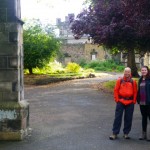


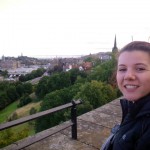

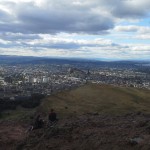
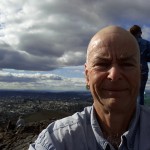

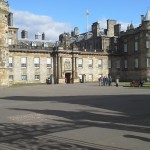
Ecclesiastes 1
New International Version (NIV)
Everything Is Meaningless
1 The words of the Teacher,[a] son of David, king in Jerusalem:
2 “Meaningless! Meaningless!”
says the Teacher.
“Utterly meaningless!
Everything is meaningless.”
3 What do people gain from all their labors
at which they toil under the sun?
4 Generations come and generations go,
but the earth remains forever.
5 The sun rises and the sun sets,
and hurries back to where it rises.
6 The wind blows to the south
and turns to the north;
round and round it goes,
ever returning on its course.
7 All streams flow into the sea,
yet the sea is never full.
To the place the streams come from,
there they return again.
8 All things are wearisome,
more than one can say.
The eye never has enough of seeing,
nor the ear its fill of hearing.
9 What has been will be again,
what has been done will be done again;
there is nothing new under the sun.
10 Is there anything of which one can say,
“Look! This is something new”?
It was here already, long ago;
it was here before our time.
11 No one remembers the former generations,
and even those yet to come
will not be remembered
by those who follow them.
Unfortunately on the last day of the Fife walkway I developed a very painful left leg muscle and tendon which is preventing me walking fast along the flat and makes walking either uphill or down (espcially stairs) very difficult, even with a stick. I managed to walk around the Castle today but sadly there was no way I could have climbed the hill John describes, so Judith and I made ourselves slowly back to where we are staying. We were supposed to start our next 5 day hike tomorrow but that is now out of the question. Instead we will hire a car and drive to each of the five locations (mostly old Abbeys in the Scottish border) but hopefully I will be able to walk some of the time! We may also be able to venture futher afield with the car and visit more castles and other historical sites. I am sure John will keep you posted with our exploits and our photos.
What a shame your leg is playing up Felicity, but there will be lots to see even if you can’t do so much walking. Frustrating tho!
All sounds so interesting.
xx
I am sorry about your leg Felicity.
You have done so well. I am sure you will still find
ways to enjoy the travels. So much interesting history.
xxx